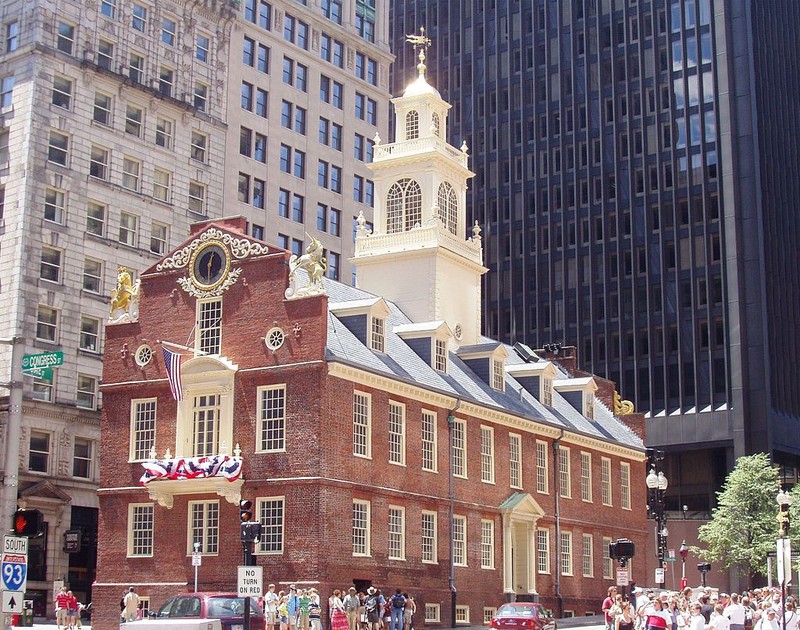Old State House
Introduction
Text-to-speech Audio
Images
The oldest remaining public building in Boston, the Old State House is home to a local history museum operated by the Bostonian Society.


Backstory and Context
Text-to-speech Audio
The building was facing possible demolition in the late 19th century but was preserved thanks to the efforts of the Bostonian Society, which was established in 1881 to rescue and restore the historic building. The Bostonian Society now operates a museum in the Old State House with many exhibits and artifacts related to the colonial period and American Revolution.
Perhaps the most iconic photo taken in relation to the Boston busing crisis and winner of the Pulitzer Prize for breaking news photography is named “The Soiling of Old Glory.” It was taken by Stanley Foreman on 5th April 1976 and shows the attack on Ted Landsmark a Black lawyer by Joseph Rakes, a white man. Educated at Yale law school, Landsmark had been campaigning to get more minorities into construction and didn’t know about the busing crisis until he walked into the middle of an anti-busing protest. He decided that he would use the publicity of the photograph to make a wider audience aware of the struggles in Boston at the time.
On 5th April 1976 a protest of the busing policy took place, organised with the help of Louise Day Hicks, the founder of Restore Our Alienated Rights (ROAR). Although Hicks was not aware that students like Rakes were taking part in the protest, she invited them in to listen to their demands and to say the Pledge of Allegiance together. After leaving “feeling righteous about their cause” (Masur 4) they crossed paths with Landsmark.
Sources
NPR Staff. Life After Iconic 1976 Photo: The American Flag's Role In Racial Protest. National Public Radio. September 18, 2016. Accessed October 03, 2018. https://www.npr.org/2016/09/18/494442131/life-after-iconic-photo-todays-parallels-of-american-flags-role-in-racial-protes.
Masur, Louis P.. The Soiling of Old Glory. New York, New York State. Bloomsbury Press, 2008.
